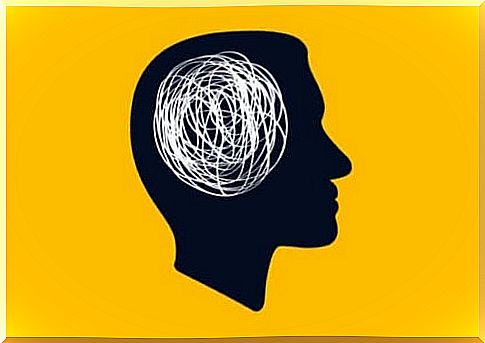Argumentation Error With The Sniper From Texas

You need to know what an argumentation error means before you try to understand what was done by the Texas sniper. In philosophy and, more specifically, in the field of logic, arguments of error are those that originally seem valid but which contain a prejudice that completely abolishes their content.
This article will discuss the argumentation error with the sniper from Texas. You will learn about the origin, what it consists of and how this phenomenon changes the way you interpret and choose information to verify your ideas or beliefs. You will also get some examples of this to understand it a little better, as well as some suggestions on how you can prevent it.

Argumentation error with the sniper from Texas
It’s a common mistake. It happens when someone interprets, invents or manipulates certain information, puts absolute focus on something that is originally meaningless until it seems to have a meaning. Either that or until it meets the original hypothesis. And it works: When the focus is maintained on a specific part, without the possibility of reviewing a larger context, you become blind to reality.
Through this phenomenon, people perform reasoning that dispels all indications that their ideas are wrong. They emphasize all the information that seems to support their hypothesis. They thus distort reality and interpret it as it suits them. Through this error of argument, they unknowingly make it obvious to hip with what they want to defend.
Origin
You should know the origin of the argumentation error with the sniper from Texas to better understand it. This concept comes from the following story:
As you can see, the shooter took the necessary steps to make his action seem logical and thus prove his worth. In other words, he changed the data (painted the target) to confirm his hypothesis (that he was a skilled sniper).
Thus, according to this argumentation error, a person changes observable data to confirm his hypotheses (just as the shooter in the story did).
Examples of argumentation errors with the sniper from Texas
To understand the argumentation error with the sniper from Texas more thoroughly follows here is an example that you can easily find in your daily life.
Imagine dreaming about number seven while staying in hotel room number 362 (which you are not aware of at first). But wait a minute now, 3 + 6 – 2 = 7, and that was the number you dreamed of, absolutely incredible! Should you then first and foremost focus on that connection within a conversation, you would in accordance with this argumentation error indicate that you had a dream that can also be true in other parts. In other words, you manipulate data to confirm your hypothesis.
Another example of this inaccuracy is the interpretation of star constellations. Your culture has taught you to draw a sequence of imaginary lines to link the stars and form figures when in reality they are determined by chance. In this case, you ignore the celestial bodies that can distort the figure you are looking for.
Selective information
As you can see, people can devalue information that is incompatible with their ideas as with the argumentation error with the sniper from Texas. They can also manipulate or adjust the information to convince someone (or themselves) of something. In the same way, you magnify the importance of what you intend to defend through this phenomenon.
Another way to interpret this error, in terms of information choices, is to ignore the differences that may exist in your data and at the same time emphasize similarities. After making the reasoning in question, you draw a conclusion that may be false.
The illusion of grouping and apophenia
This inaccuracy is related to what cognitive psychology refers to as the principles of grouping. There is a tendency to see patterns or groupings that are not there.
This argumentation error is also related to apophenia, a term used to refer to the experience of seeing patterns and connections in random or meaningless events. This is similar to what you read above.
Note, however, that one can interpret these two concepts introduced from cognitive psychology and from statistics. In fact, they get different nuances from each discipline. For example, cognitive psychology associates them with the falsity of the argument of the Texas sniper. This is because through the latter you can create patterns that do not exist. All to justify or demonstrate personal ideas or to convince others of something.
How to avoid this type of argumentation error
This error, like many others, does not always occur consciously. Here are some important ways to avoid it:
- Look for arguments against it. It is important to have good arguments in favor of, but also against all hypotheses.
- You do not always have to be right. In fact, it is easier for you to present your ideas logically and objectively if you admit mistakes from time to time.
By doing these two things, along with your awareness of this error, you will be able to minimize its occurrence and argue for your ideas in a much better way.









